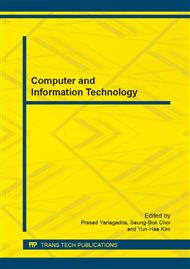p.1321
p.1325
p.1329
p.1333
p.1337
p.1342
p.1347
p.1353
p.1360
Study on Improved APF Algorithm for Autonomous Mobile Robot
Abstract:
In algorithms of obstacle avoidance for autonomous mobile robot, APF algorithm is simple, real-time and smooth, but has some limitations for solving problems. For example, the local minimum point may trap mobile robots before reaching its goal. Even though many improved APF algorithms have been put forward, few articles describe the process in detail to show how these algorithms are applied. Considering above factors, this paper focuses on embodiment of abstract improved theory for APF algorithm by showing some changes with formulas and parameters. The whole work has been done in simulation environment. According to the results this paper draws a conclusion.
Info:
Periodical:
Pages:
1337-1341
Citation:
Online since:
February 2014
Authors:
Price:
Сopyright:
© 2014 Trans Tech Publications Ltd. All Rights Reserved
Share:
Citation:


